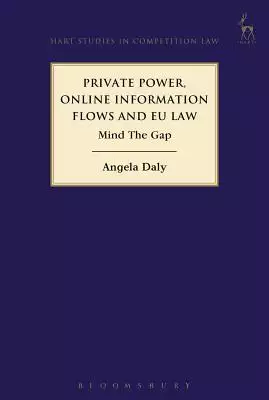free case law search的問題,透過圖書和論文來找解法和答案更準確安心。 我們找到下列問答集和資訊懶人包
free case law search的問題,我們搜遍了碩博士論文和台灣出版的書籍,推薦寫的 The Right to Be Forgotten: A Canadian and Comparative Perspective 和Daly, Angela的 Private Power, Online Information Flows and Eu Law: Mind the Gap都 可以從中找到所需的評價。
這兩本書分別來自 和所出版 。
國立政治大學 東亞研究所 楊昊所指導 黃以樂的 甚麽是親中?中國-馬來西亞關係近況發展的6M分析(2013年-2018年) (2021),提出free case law search關鍵因素是什麼,來自於馬來西亞、中國、中馬關係、國際關係理論、6M分析法。
而第二篇論文國立臺灣科技大學 資訊管理系 盛麗慧所指導 SAIDE的 新興科技時代B2B背景下的行銷數位化創新:擴散創新視角與激進和漸進創新的中介效應 (2021),提出因為有 行銷數乏化創新、創新傳播理論、激進創新、漸進式創新、IT探索、IT開發、B2B背景的重點而找出了 free case law search的解答。
The Right to Be Forgotten: A Canadian and Comparative Perspective

為了解決free case law search 的問題,作者 這樣論述:
Exploring the evolution of the right to be forgotten, its challenges, and impacts on privacy, reputation, and online expression, this book lays out the current state of the law on the right to be forgotten in Canada and in the international context while addressing the broader theoretical tensions a
t the core of the right to be forgotten.The essays contemplate questions such as: How does the right to be forgotten fit into existing legal frameworks? How can Canadian courts and policy-makers reconcile rights to privacy and rights to access publicly available information? Should search engines be
regulated purely as commercial actors? What is the right's impact on free speech and freedom of the press? Together, these essays will address the questions that legal actors and policy-makers must consider as they move forward in shaping this new right through legislation, regulations, and jurispr
udence. They will address both the difficulties in introducing the right and the long-term effects it could have on the protection of online (and offline) reputation and speech. While the question of implementing the right to be forgotten in Canada has been put forward by the Privacy Commissioner, C
anada is in need of academic literature on the matter, a need that, with this book, we intend to remedy. The questions put forward in this book will thus advance the legal debate in Canada and provide a rich case study for the international legal community. Ignacio N Cofone is an Assistant Profess
or at McGill University’s Faculty of Law, Canada
甚麽是親中?中國-馬來西亞關係近況發展的6M分析(2013年-2018年)
為了解決free case law search 的問題,作者黃以樂 這樣論述:
2013年至2018年之間,中國與馬來西亞之關係可謂是達到了新高點。在此期間,中馬兩國在許多面向展開合作關係,包括軍事、經貿、教育及文化等等。雙方的合作關係甚至成為了馬來西亞2018年全國選舉的重點議題之一,當時執政者以首相納吉.拉薩(Najib Razak)為首,其發起或支持的許多中馬合作工程案備受質疑,被批評是「親中」的表現。其中一個大力批評納吉親中的群體為希望聯盟(Pakatan Harapan),而他們於2018年全國選舉中的勝利無意間也被刻畫成「反中派」的勝利。整起事件的過程中,「親中」的使用似乎是貶義用途。2019年「反對逃犯條例修訂草案運動」開始時,馬來西亞普遍華裔也高度關注此
事,而「親中」與「反中」逐漸成為了嘲諷意味極重的政治標籤。馬來西亞在2013年至2018年之間與中國的互動關係似乎也被貼上了一樣的標籤。甚麼是親中?本研究認為目前「親中」作為形容詞的用法帶有犧牲自主權,並妥協自身立場的含意。中馬關係中是否真的有如此現象?現今有關兩國互動關係的理論架構,主要以「遠近」為衡量單位,或是以國對國之反應來判斷其關係之本質,如:新現實主義中的「抗衡」(Balancing)、「扈從」(Bandwagoning)或「避險」(Hedging)。然而,由此角度並未能充分解釋「親中」,因為這些理論主要以國家行為者(state as actor)為衡量基準,缺乏了深入到社會層級互動
之考量。國家行為者制定決策的考量主要以可衡量之客觀元素,如:國家之硬實力(Hard power),但「親中」的表現似乎有意忽略此元素,以「偏好」(preference)作為制定決策之基本考量,社會行動者(societal actor)也因此是探討「親中」之定義重要的研究對象。本研究嘗試以Andrew Moravscik所提出的自由主義理論架構,結合Chia-Chien Chang及Alan H. Yang所提出的6M分析法,對中馬在2013年至2018年之間的互動過程進行分析,並以此探討「親中」之定義。馬國社會中第二大族群就是具有「中華情結」之華裔群體,馬國的「親中」表現極有可能由此開始。但本
研究發現馬國「親中」的表現除了源自於華裔社會行動者,也可能從處在執政層級之巫裔社會行動者。本研究以6M分析法歸納出2013年至2018年之間重要的「親中」事件,並總結出兩大「親中化」過程,即「由上至下」(國家行為者至社會行動者)以及「由下至上」(社會行動者至國家行為者)。
Private Power, Online Information Flows and Eu Law: Mind the Gap

為了解決free case law search 的問題,作者Daly, Angela 這樣論述:
This monograph examines how European Union law and regulation address concentrations of private economic power which impede free information flows on the Internet to the detriment of Internet users' autonomy. In particular, competition law, sector specific regulation (if it exists), data protection
and human rights law are considered and assessed to the extent they can tackle such concentrations of power for the benefit of users. Using a series of illustrative case studies, of Internet provision, search, mobile devices and app stores, and the cloud, the work demonstrates the gaps that currentl
y exist in EU law and regulation. It is argued that these gaps exist due, in part, to current overarching trends guiding the regulation of economic power, namely neoliberalism, by which only the situation of market failure can invite ex ante rules, buoyed by the lobbying of regulators and legislator
s by those in possession of such economic power to achieve outcomes which favour their businesses. Given this systemic, and extra-legal, nature of the reasons as to why the gaps exist, solutions from outside the system are proposed at the end of each case study. This study will appeal to EU competit
ion lawyers and media lawyers. Angela Daly is Vice Chancellor’s Research Fellow at Queensland University of Technology’s Faculty of Law (Australia), Adjunct Research Fellow at the Swinburne Institute for Social Research, and Research Associate at the Tilburg Institute for Law, Technology and Socie
ty (Netherlands).
新興科技時代B2B背景下的行銷數位化創新:擴散創新視角與激進和漸進創新的中介效應
為了解決free case law search 的問題,作者SAIDE 這樣論述:
TABLE OF CONTENTS摘要 iABSTRACT iiACKNOWLEDGEMENT iiiTABLE OF CONTENTS ivLIST OF FIGURES viLIST OF TABLES vii1. INTRODUCTION 11.1. Background and Research Motivations 11.2. Research Gaps 81.3. Research Questions and Purpose of the Study 111.4. Organization
of the Dissertation 142. LITERATURE REVIEW 152.1. Theoretical Background 152.1.1. Marketing Digitalization Innovation 152.1.2. Diffusion of Innovations Theory (DOI) 162.1.3. IT Exploration 172.1.4. IT Exploitation 192.1.5. Radical Innovation 202.1.6.
Incremental Innovation 212.2. Hypothesis Formulation 222.2.1. IT Exploration, IT Exploitation, Radical Innovation, Incremental Innovation, and Marketing Digitalization Innovation 232.2.2. The Mediating Roles of Radical Innovation and Incremental Innovation 283. RESEARCH METHO
DOLOGY 323.1. Respondents and Survey Mechanism 323.2. Measures and Survey Instrument 343.3. Control Instruments 363.4. Marker Instrument 374. RESULTS 384.1. Construct Assessment 384.2. Structural Model Evaluation 424.3. Direct Effects 434.4. Medi
ation Effects 435. DISCUSSIONS 455.1. Theoretical and Research Contributions 465.2. Managerial and Practical Contributions 515.3. Dissertation Limitation 615.4. Future Research 636. REFERENCES 64APPENDIX 80Questionnaire Survey 80